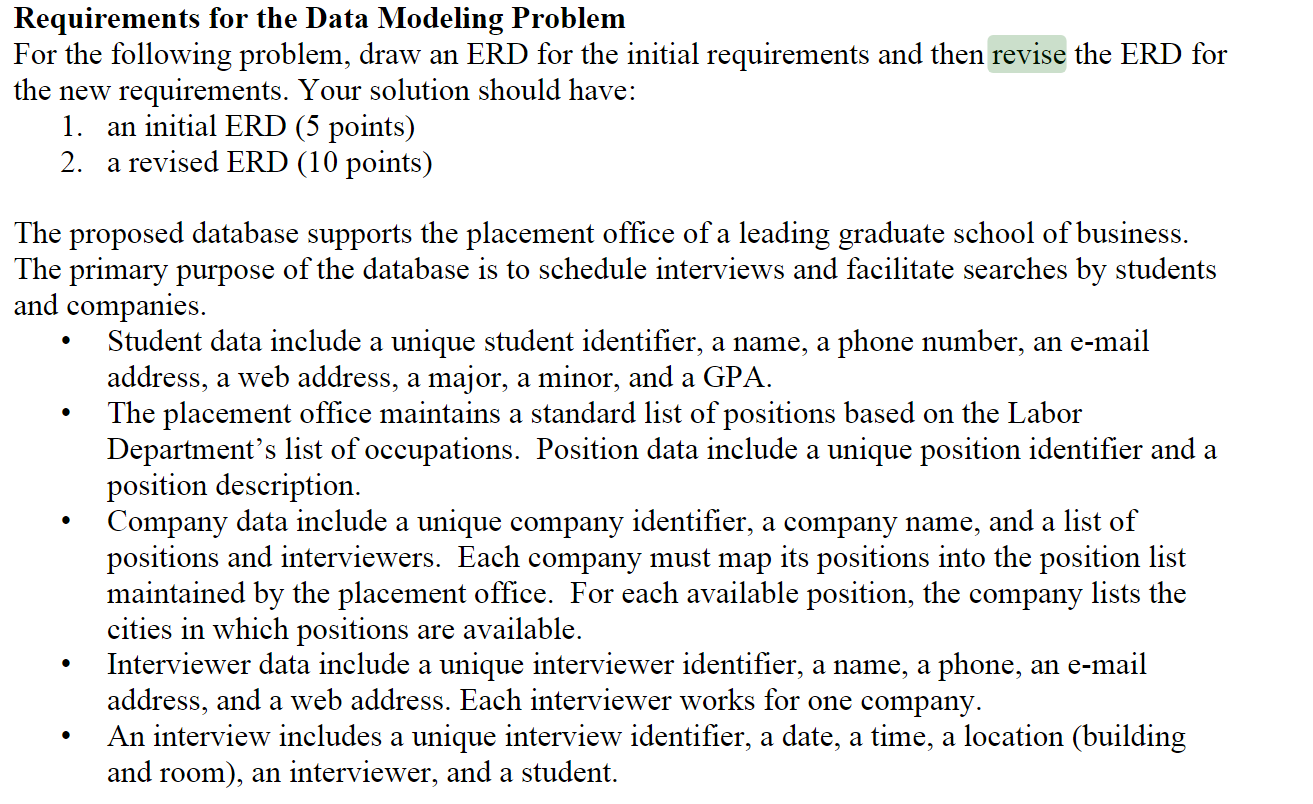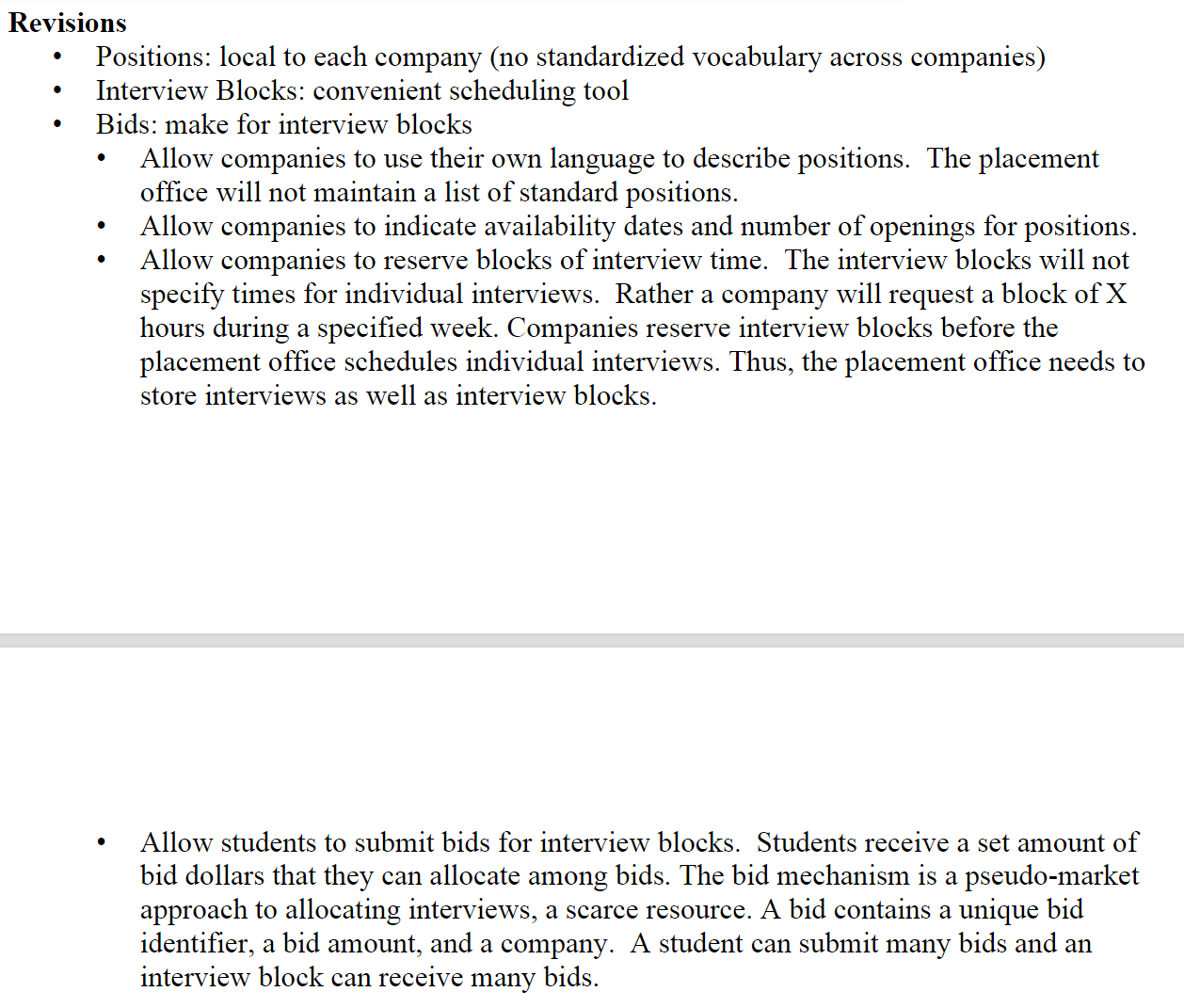Home /
Expert Answers /
Computer Science /
create-an-erd-based-on-the-bullet-points-below-then-revise-the-original-erd-with-the-new-requiremen-pa553
(Solved): Create an ERD based on the bullet points below. Then revise the original ERD with the new requiremen ...
Create an ERD based on the bullet points below. Then revise the original ERD with the new requirements below.


Requirements for the Data Modeling Problem For the following problem, draw an ERD for the initial requirements and then revise the ERD for the new requirements. Your solution should have: 1. an initial ERD (5 points) 2. a revised ERD (10 points) The proposed database supports the placement office of a leading graduate school of business. The primary purpose of the database is to schedule interviews and facilitate searches by students and companies. - Student data include a unique student identifier, a name, a phone number, an e-mail address, a web address, a major, a minor, and a GPA. - The placement office maintains a standard list of positions based on the Labor Department's list of occupations. Position data include a unique position identifier and a position description. - Company data include a unique company identifier, a company name, and a list of positions and interviewers. Each company must map its positions into the position list maintained by the placement office. For each available position, the company lists the cities in which positions are available. - Interviewer data include a unique interviewer identifier, a name, a phone, an e-mail address, and a web address. Each interviewer works for one company. - An interview includes a unique interview identifier, a date, a time, a location (building and room), an interviewer, and a student.
Revisions - Positions: local to each company (no standardized vocabulary across companies) - Interview Blocks: convenient scheduling tool - Bids: make for interview blocks - Allow companies to use their own language to describe positions. The placement office will not maintain a list of standard positions. - Allow companies to indicate availability dates and number of openings for positions. - Allow companies to reserve blocks of interview time. The interview blocks will not specify times for individual interviews. Rather a company will request a block of hours during a specified week. Companies reserve interview blocks before the placement office schedules individual interviews. Thus, the placement office needs to store interviews as well as interview blocks. - Allow students to submit bids for interview blocks. Students receive a set amount of bid dollars that they can allocate among bids. The bid mechanism is a pseudo-market approach to allocating interviews, a scarce resource. A bid contains a unique bid identifier, a bid amount, and a company. A student can submit many bids and an interview block can receive many bids.